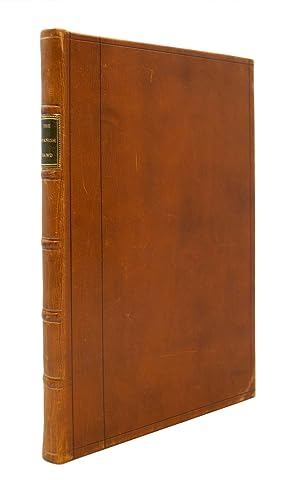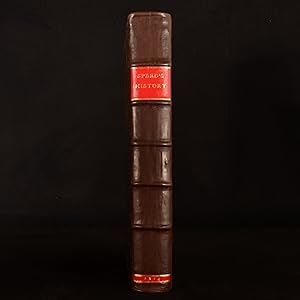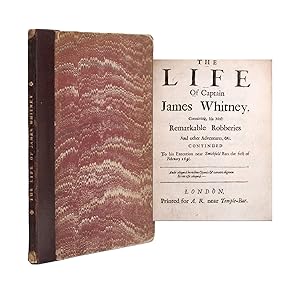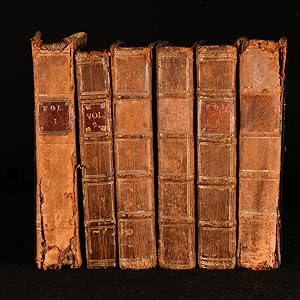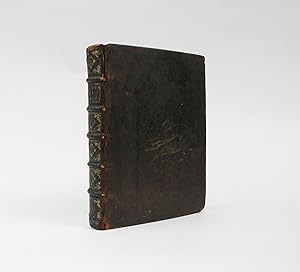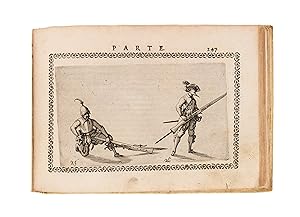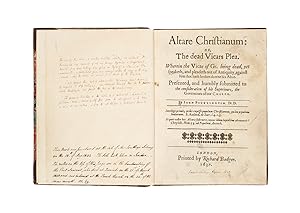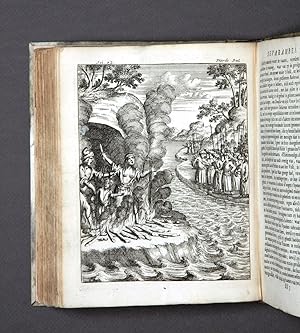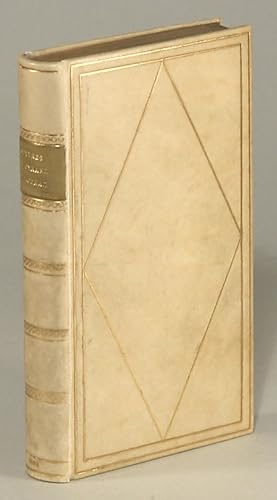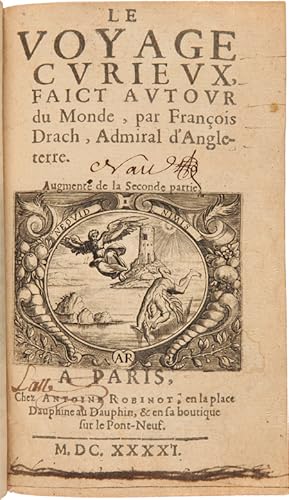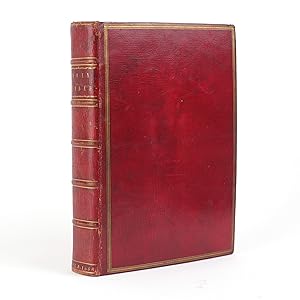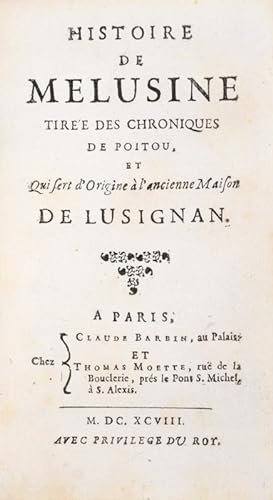fiction (583 résultats)
Type d'article
- Tous les types d'articles
- Livres (580)
- Magazines & Périodiques
- Bandes dessinées
- Partitions de musique
- Art, Affiches et Gravures (1)
- Photographies
- Cartes (1)
-
Manuscrits &
Papiers anciens (1)
Etat
Reliure
Particularités
- Edition originale (122)
- Signé (16)
- Jaquette (17)
- Avec images (284)
- Sans impression à la demande (578)
Livraison gratuite
Pays
Evaluation du vendeur
-
Somnium, seu opus posthumum de astronomia lunari. Divulgatum a Ludovico Kepplero filio. Sagan and Frankfurt: for the heirs of the author, 1634. [Bound with:] Ad epistolam . Jacobi Bartschii . praefixam Ephemeridi in annum 1629 responsio: De computatione et editione ephemeridum. Sagan [i.e., Görlitz?]: Typis Saganensibus, 1629. [Bound with:] Admonitio ad astronomos, rerumque coelestium studiosos, de raris mirisq (ue) anni 1631 . iterumq (ue) edita à Jacobo Bartschio. Frankfurt: Gottfried Tambach, 1630. [Bound with:] Chilias logarithmorum ad totidem numeros rotundos, praemissa demonstration legitima ortus logarithmorum eorumque usus . [- Supplementum]. Marburg: Caspar Chemlin, 1639/25. [Bound with:] De vero anno quo aeternus dei filius humanam naturam in utero benedictae virginis Mariae assumpsit. Prius Teutonica lingua edita, nunc ad exterorum petitionem in Latinam linguam translata; & responsionibus ad obiecta Sethi Calvisii nuperrima locupletata . Frankfurt: Johann Bringer, 1614. [Bou
Date d'édition : 1639
Vendeur : SOPHIA RARE BOOKS, Koebenhavn V, Danemark
Membre d'association : ILAB
Edition originale
First edition. EXTRAORDINARY SAMMELBAND OF SIX RARE WORKS BY KEPLER - INCLUDING SOMNIUM, HIS 'VOYAGE TO THE MOON'. An extraordinary sammelband, with a remarkable provenance, containing six rare works by Kepler, including the first edition of Somnium, Kepler's imaginary voyage to the moon, in which he utilizes the motions of the planets as they would be seen from the moon to argue for the Copernican system, and gives a remarkable description of the appearance of the earth as seen from the moon - this is Kepler's rarest major work. "At Sagan, Kepler finally began to print a short book whose beginnings went back to his school days at Tübingen: his Somnium, seu astronomia lunari. The 'Dream' is a curiously interesting tract for two reasons. First, its fantasy framework of a voyage to the moon made it a pioneering and remarkably prescient piece of science fiction. Second, its perceptive description of celestial motions as seen from the moon produced an ingenious polemic on behalf of the Copernican system" (DSB). In The Dream, a young traveller lands on the Moon to find that lunar beings believe Earth revolves around them - from their cosmic vantage point, the Earth rises and sets against their firmament, something reflected even in the name they have given Earth: Volva. Kepler chose the name to emphasize the fact of Earth's revolution - the very motion that made Copernicanism so dangerous to the dogma of cosmic stability. Kepler suggests that our own certitude about Earth's fixed position in space is just as misguided as the lunar denizens' belief in Volva's revolution around them. The final part of the work is Kepler's translation of, and commentary on Plutarch's fantasy on the face of the moon. Kepler wrote Somnium in 1609, circulating it in manuscript form. Some 20 years later he added the dream framework and wrote the 223 notes, but it was only published after his death in 1630. Most of the book was printed in Sagan, whilst the title and dedication (by Kepler's son) were printed in Frankfurt. Bound here with the Somnium are five other works by Kepler: the first edition of his Letter to Jacob Bartsch, which resulted in their joint production of the Ephemerides - this work is an important biographical source for Kepler's life and final years; the second edition of Admonitio ad astronomos, Kepler's correct prediction of the transits of Mercury and Venus across the face of the Sun in 1631; the second edition of Chillias logarithmorum (differing from the first in only the first two leaves), containing Kepler's original construction of logarithmic tables which enabled him to complete the Tabulae Rudolphionae; and two works devoted to the issue of establishing a correct chronology of events described in the Holy Scriptures, the first edition of Eclogae chronicae and the first Latin edition of De vero anno. Caspar records twenty-two copies of the Somnium in German and Swiss libraries, the smallest number in his census for any major work of Kepler. Only three copies of the Somnium have appeared at auction in the last 40 years, of which only one was in a contemporary binding (the Richard Green copy, Sotheby's, November 17, 1988, lot 12, $92,500). Provenance: Title of the first-bound work, De vero anno, with two notes in ink: 'Ex bibl. Nic. Heinsii / Frid. Ben. Carpzov / Lugduni Bat. 1683' and 'Ex auctione Carpzoviana / JPW A = 1700'. The first identifiable owner of the anthology was the Dutch classical scholar and poet Nicolaas Heinsius the Elder (1620-81), who spent several years in Stockholm at the court of Queen Christina. He assembled one of the largest private libraries in Europe, comprising some 13,000 books. The present sammelband is listed as no. 139 in Heinsiana, sive catalogus librorum . (Leiden, 1682), p. 220. The Leipzig lawyer and councilor Friedrich Benedict Carpzov the Elder (1649-99), who was co-editor of the Acta Eruditorum, assembled a large library which was auctioned after his death. The present sammelband is listed as no. 118 in the auction catalogue Bibliotheca Carpzoviana (Leipzig, 1700), p. 442 - it was sold for 2 talers, 19 groschen. "When Kepler was enrolled at Tübingen University, the students there were required to compose a number of dissertations or disputations. One such composition written by Kepler in 1593 dealt with the following question: How would the phenomena occurring in the heavens appear to an observer stationed on the moon? Kepler had hit upon this ingenious device in an effort to overcome the deep-rooted hostility to the Copernican astronomy. According to Copernicus the earth moves very swiftly. But the people who live on the earth do not see or hear or feel this movement. Yet they can watch the moon perform various motions. These lunar motions, however, will escape detection by an observer located on the moon for the simple reason that he would be participating in those motions. Since the lunar motions would not be apparent to an observer there, by the same token the terrestrial motions are not noticed by observers here. This seems to have been the basic theme of Kepler's 1593 dissertation. "It was never presented as a Tübingen disputation, however, because Veit Müller, the professor in charge of those academic exercises, was so unalterably opposed to Copernicanism that he refused to permit Kepler's theses to be heard. This rebuff did not dishearten the young student to the point of tearing up his work in disgust and throwing it away. On the contrary he kept it and bided his time until he would no longer be under the control of a reactionary and unsympathetic professor. This earliest draft has not survived - it was not mentioned in the first catalogue of Kepler's manuscripts. "That earliest draft was apparently left undisturbed for 16 years, during which all sorts of things happened to Kepler, both good and bad. Among the good things was his appointment as Imperial Mathematician. In this capacity he lived in Prague, which was then the capital of the Holy Roman Empire. T.
-
SOMNIUM, SEU OPUS POSTHUMUM DE ASTRONOMIA LUNARI. DIVULGATUM À M. LUDOVICO KEPPLERO FILIO, MEDICINAE CANDIDATO
Edité par Sumptibus haeredum authoris, Sagan and Frankfurt, 1634
Vendeur : Currey, L.W. Inc. ABAA/ILAB, Elizabethtown, NY, Etats-Unis
Edition originale
Small quarto (196 x 151 mm), two parts in one volume: pp. [1-4] 1-182 [183-184], title within typographical border, 6 woodcut diagrams in the text, woodcut head and tail pieces, modern full calf binding by Atelier Laurencet. First edition. A virtually unobtainable edition of a highly important early imaginary voyage to the Moon. "The 'Dream' is a curiously interesting tract for two reasons. First, its fantasy framework of a voyage to the Moon made it a pioneering and remarkably prescient piece of science fiction. Second, its perceptive description of celestial motions as seen from the Moon produced an ingenious polemic on behalf of the Copernican system." - DSB. The final part is Kepler's translation of, and commentary on, Plutarch's fantasy on the face of the Moon (see Nicolson, pp. 16-7). Kepler wrote SOMNIUM in 1609, circulating it in manuscript form, after which he amended and added to it, but the work was not published until after his death in 1630. "Around 1611, Kepler circulated a manuscript of what would eventually be published posthumously as SOMNIUM (A Dream), part of the purpose of which was to describe what practicing astronomy would be like from the prospective of another planet, and to demonstrate the feasibility of a non-geocentric system. The first version of SOMNIUM, a thesis rejected by the University of Tübingen in 1593, was shelved until 1609 when Kepler worked on developing it into its final form, a dream narrative with additional material on lunar geography. It was never published at the time, and during the 1620s Kepler, appreciating that it was too succinct and in need of further development, added 223 footnotes explaining the background theoretical physics and astronomy which expanded the text to several times its original length. He also included an essay on lunar geography with explanatory notes. Kepler died in 1630 and the compound manuscript was prepared for publication by his son Ludwig, together with Kepler's translation of Plutarch's 'The Face in the Moon' . Kepler's SOMNIUM was first published at Frankfurt in 1634 . The work remained little known for three centuries and was not reissued in the original Latin until 1969. It was first rendered into English in 1947 by Joseph Keith Lane as a thesis for a Master of Arts degree at Columbia University. This was never published. A partial translation of the basic document was made by Everett Bleiler in 1950, but it was not until 1965 that the first complete translation by Patricia Kirkwood was published by the University of California. The subsequent translation and commentary by Edward Rosen (1967, 2003), with its copious notes and introduction, is now regarded as definitive." - Howgego, Encyclopedia of Exploration: Invented and Apocryphal Narratives of Travel K2. "Ironically enough, the best of all supernatural voyages to the Moon was written by a great scientist. Kepler's SOMNIUM marks at once the end and the beginning of an era. No important later voyage will employ so fully the supernatural, yet none will be more truly 'scientific' than that 'Dream,' which was the fons et origo of the new genre, a chief source of cosmic voyages for three centuries." - Nicolson, Voyages to the Moon, pp. 41-7. ". Kepler's SOMNIUM has been very important in the early history of fantastic fiction." - Bleiler, Science-Fiction: The Early Years 1218. Anatomy of Wonder (1976) 1-22; (1981) 1-109; (1987) 1-54; (1995) 1-54; and (2004) II-590. Clute and Nicholls (eds), The Encyclopedia of Science Fiction (1993), p. 662. Ley, Rockets, Missiles, and Space Travel (1951), pp. 14-18. Versins, p. 493. First two leaves (title leaf and dedication leaf) affixed to stubs, dedication leaf closely trimmed, just touching letters on first line, margins of two leaves professionally repaired, faint old stamp on blank verso of title leaf, a very good copy overall. Enclosed in a custom quarter leather clamshell box. (#157025).
-
Los trabaios de Persiles, y Sigismunda, historia setentrional.
Edité par Lisbon, Por Jorge Rodriguez, 1617., 1617
Vendeur : Richard C. Ramer Old and Rare Books, New York, NY, Etats-Unis
Edition originale
4°, early nineteenth-century calf (neatly rebacked with original spine laid down; repairs to corners), spine richly gilt with raised bands in five compartments, black leather lettering pieces in second and third compartments from head, gilt letter and numbers, gilt initials "HT" below a gilt ram's head on both covers, within double ruled gilt borders. Title page within typographical border, with small woodcut of a rose within a rectangular frame. Two large and elegant woodcut initials. Typographical head- and tailpieces. Colophon. A few leaf numbers slightly shaved. In good to very good condition. Super libris of Henri Ternaux-Compans (1763-1833), with his initials tooled in gilt on both boards below a gilt ram's head. Bookplate of Kenneth Rapoport. (4), 218 ll. 4, A-Z8, 2A-2D8, 2E2. Text in 2 columns. Leaf 121 wrongly numbered 120. Leaves 135-6 wrongly numbered 131-2. Leaf 207 correctly numbered (as opposed to a copy in the Biblioteca Nacional de Portugal in which it is wrongly numbered 208). *** First and only early Lisbon edition, published the same year as the first Madrid edition (printed in both quarto and octavo) by Juan de la Cuesta. Within the same year six other editions appeared. By 1629 ten editions were published, testifying to the immense popularity of the author and his book.Los trabajos de Persiles y Sigismunda was Cervantes's last work, finished four days before his death and published posthumously in 1617. Overshadowed by Don Quijote, Cervantes regarded Persiles y Sigismunda as his masterpiece: in his introduction to the Novelas ejemplares he describes Persiles as the book with which he would rival the great Greek writer Heliodorus. Persiles y Sigismunda stands in opposition to the more famous Don Quixote by its embrace of the fantastic rather than the commonplace.*** Arouca S33. Palau 53898. Rius, Bibliografía crítica de las obras de Miguel de Cervantes Saavedra 351. Simón Díaz. BLH VIII, 939. Sousa Viterbo, A literatura hespanhola em Portugal, pp. 245-6 (65-6). Coimbra, Reservados 660. Gallardo 1783. Givanel i Mas, Catáleg de la collecció cervaàntina formada per D. Isidoro Bonsoms i Sicart 41. HSA p. 128. Palha 1377. This edition not in Goldsmith, British Museum Seventeenth-Century Spanish and Portuguese STC.This edition not in Salvá or Heredia. CCPBE locates only six copies in Spanish libraries (two incomplete; three described as in poor condition): Universidad de Oviedo, Biblioteca Valenciana, Escuela Municipal de Artes y Oficios-Vigo-Pontevedra (two copies, both in poor condition, both lacking the title page and preliminary leaves), Biblioteca Nacional de España (two copies, one with binding deteriorated). Porbase locates three copies, all in the Biblioteca Nacional de Portugal (one in poor condition and missing the title page, a preliminary leaf, as well as leaves, 48-50, 88-101, 108-109 and 128-129, with 4 leaves supplied in mss.; the other two complete, but with leaves loose and worming).
-
Certaine Select Dialogues of Lucian: Together with his True Historie, Translated from the Greeke into English. By Mr Francis Hickes. Whereunto is added the life of Lucian gathered out of his owne Writings, with briefe Notes and Illustrations upon each Dialogue and Booke
Edité par William Turner, Oxford, 1634
Vendeur : James Cummins Bookseller, ABAA, New York, NY, Etats-Unis
Edition originale
First edition in English of the Dialogues and Lucian's True History. Collation: A-2C4 2D1. [16], 55, [1], 59-196 pp. Pagination irregular: I4v is numbered 48. 1 vols. 4to. First English Edition of Lucian of Samosata. First English edition of the fantastical and irrevent Dialogues and True History of Lucian of Samosata (CE 125-180), a Syrian Arab writing in Greek whose works are profoundly influential across European literatures and are also seen as foundation texts of early science fiction. Lucian was an advocate in Antioch and travelled through the eastern Mediterranean lands, studied philosophiy in Athens, and later held an administrative position in Egypt. His Dialogues include "Icaromenippus, or the Loftie Traveller", describing a trip to the Moon, "whence he is able to get a literal (i.e., visual) perspective on the nature of mankind's follies, and second to Olympus, where he meets Jupiter and watches that god deal with men's prayers (which arrive fartlike through huge vents)" (John Clute, in the Encyclopedia of Science Fiction, SFE). "Lucian His True Historie" is another fantastic voyage to the Moon and back to exotic islands on Earth, enjoyable and often scatalogoical, with three-headed vultures, space war, cannibal sea-women, and more. "Lucian's fertile imagination piles marvel upon lunatic marvel, and simultaneously mocks them" (SFE). The influence of Lucian can be detected in the writings of Thomas More, Erasmus, Rabelais and Cervantes. Lucian was curiously overlooked by the Elizabethans: Lathrop notes "Plutarch, Lucian, and Isocrates were not quite forgotten in this period, though they did not hold the central place which they held in the school of Erasmus". This edition is the first in English, edited by the translator's son; it was reprinted again in the 1660s. Swift made up for lost time and established a legacy of Lucian in English literature, whch continues on to the dialogue-based satires of Thomas Love Peacock and others. Attractive copy of a milestone in world literature. ESTC S108898; Madan,I, 178 Contemporary calf. Original spine laid down, some dampstaining in upper half of text, soiling and paper flaws to B1 & B2, affecting a few letters without loss of meaning. Very good copy of a rare book Collation: A-2C4 2D1. [16], 55, [1], 59-196 pp. Pagination irregular: I4v is numbered 48. 1 vols. 4to First edition in English of the Dialogues and Lucian's True History.
-
MUSÉUM REGIUM, Seu Catalogus Rerum Tan Naturalium Quàm Artificialim, Quæ In Baslilica Bibliothecæ Augustissimi Daniæ Norvegiæq; Monarchæ Christiani Qvinti Hafniæ Asservantur, Descriptus Ab Oligero Jacobæo, Me. & Phil. Prof. Regio. WITH: AUCTARIUM RARIORUM, Qvæ Museio Regio Per Triennium Hauniæ Accesserunt, Uberioribus Illustrata Commentariis, Præcipue Numismata et Aliæ Antiqvitates Parti Secundæ Aut Insertæ Aut Inserendæ.
Edité par Copenhagen: Joachim Schmetgen., 1696
Vendeur : LUCIUS BOOKS (ABA, ILAB, PBFA), York, Royaume-Uni
Edition originale
First edition. Folio. pp. [16], 1-40, [1], 43-201, [5], [41] + [2], 97, [1]. Contemporary full vellum with manuscript title in black ink to the spine. Red speckled edges. Title page printed in red and black. Illustrated with an engraved frontispiece, 41 engraved plates (two of which are double-page) and with a decorative headpiece, tailpiece and large engraved initial to each chapter, each illustrated to represent the category of artefacts discussed therein. The standard collation of the work is 37 plates, however the present copy also includes the 'Auctarium rariorum' (1699) and so contains an additional four plates of numismatic subjects. A near fine copy, the binding square and firm; the vellum with some minor marking is otherwise unusually clean and bright. The frontispiece with the margins trimmed and three closed tears (10cm, 7cm and 3cm) laid down to the recto of the second front blank. The entirely complete contents with a small armorial bookplate to the front pastedown are otherwise immaculate throughout, remaining free from any foxing, marking or inscriptions. The plates themselves are in very fine condition. A superlative copy. A beautifully preserved example of this magnificent guide to the King of Denmark's Kunstkammer, or Cabinet of Curiosities, richly illustrated with a superb suite of engravings by Johann Erichsonig after Benedict Grothschilling. The Renaissance enthusiasm for classical antiquity and the upsurge in trade resulting from the discovery of new continents, provided the impetus for the growth of collections of ancient relics, artistic objects and rarities relating to ethnography and natural history during the sixteenth and seventeenth centuries. Assembled in princely, noble and scholarly houses all over Europe, these 'cabinets of curiosity', or 'wonder-rooms', were curated spaces of 'learned entertainment' in which social and intellectual elites could showcase the glamourous objects which they had gathered during their travels (or else that had been acquired on their behalf). Forming tangible representations of their owner's intelligence, erudition and taste, such collections were certainly a conspicuous display of wealth and social standing. However, through their attempts to categorise, learn from, and tell stories about the wonders and oddities which they contained, these pioneering assemblages also formed the precursor of the modern museum, both in spirit and substance. The Royal Danish Kunstkammer, founded by King Frederick III in 1650 and continued by his son, Christian V (1646-1699), to whom the present work is dedicated, formed a spectacular example of its type. This catalogue, authored by Oliger Jacobaeus (1650-1701), a comparative anatomist who taught medicine, philosophy, history and geography at the University of Copenhagen, provides an important written and visual record of the Kunstkammer as it was in the late seventeenth century, illustrating a wide range of its fascinating holdings, including: Egyptian mummies, reptiles, birds, fishes, shells, snakes, insects, plants, elephant teeth, skulls, horns, antlers, asteroids, minerals and stones, precious gold and silver objects, instruments and weaponry created by cultures from around the globe, relics from Northern Europe's antiquity, mechanical and optical instruments and an extensive collection of coins and medals. As was the case with many such collections, the Kunstkammer was dispersed in 1825, with its contents going on to form the basis of several specialised museums which were established during the early nineteenth century. Further details and images for any of the items listed are available on request. Lucius Books welcomes direct contact with our customers.
-
The Workes of Our Ancient and Learned English Poet, Geffrey Chaucer, Newly Printed
Edité par London: Printed by Adam Islip, 1602
Vendeur : B & B Rare Books, Ltd., ABAA, New York, NY, Etats-Unis
Hard Cover. Etat : Fine. Edited by Thomas Speght and revised with the help of Francis Thynne. Illustrated with two title pages, John Speed's full-page portrait of Chaucer with genealogical border, woodcut initials, ornaments, and head-and-tail pieces throughout, and knight and lance woodcut to Fol. 1. Folio. Second Speght edition (Seventh collected edition overall), with errata leaf. Finely bound by W. Pratt in red morocco, boards triple-ruled in gilt, spine with six raised bands, spine lettered, ruled and decorated in gilt, all edges gilt, gilt turn-ins, red marbled endpapers, 19th century Alexander Young bookplate to front pastedown, and 19th century Parliament member John Burns ownership signature to verso of front free endpaper. About fine, with light rubbing to joints and corners, subtle repair to first few leaves, with small chips neatly closed, Chaucer portrait supplied from another copy, and repair to lower gutter of last leaf. Overall, a stately example, attractively bound with exceptionally clean pages. STC 5080. This collection of Chaucer's works includes The Canterbury Tales, Troilus and Criseyde, The Legend of Good Women, The House of Fame, The Testament of Love, assorted ballads, and many others. Chaucer's best-known work, The Canterbury Tales (1392), is a collection of 14th century short stories concerning the story-telling contest of a group of traveling pilgrims written in Middle English during the Hundred Years' War. Chaucer is widely recognized as the "Father of English Literature" for his pioneering use of English vernacular and his novelistic innovations. He was the first literary giant to be buried in what is now the Poets' Corner in Westminster Abbey, resting place of such luminaries as Shakespeare, Charles Dickens, and Thomas Hardy. Thomas Speght's first edition of this collected works was published in 1598 and drew heavily from John Stow's 1561 edition. Notably, Speght's edition included one of the first printed biographies of Chaucer and was the definitive source for facts about the author's life until the mid-19th century. It also included an extensive glossary for words that, by the late 16th century, had fallen out of use. For this second edition, Speght addressed some of the criticisms levied at his first edition by Francis Thynne, the son of William Thynne, a former Chaucer editor. According to Pforzheimer, "This edition . is the earliest in which thorough punctuation was attempted, and in many other ways it is a distinct improvement upon Speght's first edition." Additionally, two new works, Jack Uplande and La Priere de Nostre Dame, were added, and the glossary was updated significantly.
-
L'Astrée. où par plusieurs histoires, et souz personnes de Bergers, & d'autres, sont deduits les divers effets de l'honneste amitié.
Edité par Paris, Antoine de Sommaville, 1647
Livre
Couverture rigide. Etat : Bon. . 5 forts volumes in-8 (180 x 117 mm) de 7 ff.n.ch., 755 pp., 2 ff.n.ch., titre et portrait (Astrée) gravée, 12 planches gravées pour le volume I; 4 ff.n.ch., titre et 2 portraits (Urfé et Astrée) gravés, 984 pp., 12 planches gravées pour le volume II; 9 ff.n.ch., titre et 2 portraits (Astrée, Urfé) gravés, 1221 pp., 1 ff.n.ch., 12 planches gravées pour le volume III; titre et 2 portraits (Astrée et Urfé), 5 ff.n.ch., 1386 pp., 2 ff.n.ch., 12 planches gravées pour le volume IV; 14 ff.n.ch., titre et portrait (Astrée) gravés, 953 pp., 2 ff.n.ch. (le dernier blanc), 12 planches gravées dont deux contrecollées. Vélin ivoire, dos lisses avec titres manuscrits (reliure de l'époque). Tchemerzine, V, 943. Dernière édition complète de l'Astrée. Elle a été partagée entre Toussaint, Quinet, Augustin Courbé et Antoine de Sommaville. L'illustration de cette édition - 73 planches gravées sur cuivre - est comprise dans la pagination: 1 frontispice répété en tête de chaque volume, 12 figures par volume, un portrait de l'Astrée répété cinq fois, un portrait d'Urfé répété trois fois (volumes II, III, IV). Tchemerzine mentionne un portrait de Baro pour le volume V (absent ici comme dans d'autres exemplaires). "Roman pastoral de l'écrivain français Honoré d'Urfé, les deux dernières par les soin de son secrétaire, Balthazar Baro. L'auteur raconte les amours du berger Céladon, et de la bergère Astrée. A travers mille péripéties, l'action se déroule au Ve siècle après J.-C. aux temps anciens des Gaulois et des druides, sur les rivages enchanteurs du Lignon, dans une des plus belles régions de la France, le Forez. L' uvre prend modèle sur les grands exemples italiens de l'Aminta du Tasse et du Pasteuer fido de Guarini, et plus directement sur Diana, roman de l'Espagnol Montemayor. La délicatesse des descriptions de la nature et la peinture des sentiments humains s'y unissent à la galanterie et à l'amour tels qu'on les pratiquait dans la société française. Ce roman très célèbre pendant tout le XVIIe siècle intéresse le savant par la peinture précise de l'idéal précieux et mondain qu'il nous donne; de plus s'y affirme un goût exceptionnel pour la recherche psychologique qui - à travers la fiction pastoral - influa sur l'esprit et sur la littérature du grand siècle, et détermina l'évolution du roman psychologique" (Laffont). Bel exemplaire dans sa première reliure en vélin ivoire; certaines planches sont signées par Daniel Rabel (1578-1637), célèbre peintre de miniatures et "prince de l'art botanique", il fut de 1631 à 1632 le peintre personnel de Gaston d'Oréans, fils d'Henri IV. (inv 14707).
-
The Troublesome and Hard Adventures in Love. Lively setting forth, the Feavers, the Dangers, and the Jealousies of Lovers; and the Labyrinths and Wildernesses of Fears and Hopes through which they dayly Passe. Illustrated by many admirable Patterns of heroical Resolutions in some persons of Chivalry and Honour; and by the Examples of incomparable Perfections in some Ladies . Written in Spanish, by that excellent and famous Gentleman, Michael Cervantes; and exactly translated into English, by R.C.Gent.
Edité par London, Printed by B.Alsop .1652 [but 1651]., 1651
Vendeur : Bernard Quaritch Ltd ABA ILAB, London, Royaume-Uni
Signé
4to, pp.[280]; with the initial leaf A1 (blank except for the signature within a woodcut border); a very good copy in modern crushed maroon morocco, spine lettered directly in gilt; engraved armorial bookplate of Charles Viscount Bruce of Amthill (dated 1712) to title verso.The rare second edition of a text of 1594 known in a single imperfect copy (STC 153.3). The earlier publication, not ascribed to any author but also translated by 'R.C.', is largely adapted from a French translation (Paris, 1578 1587) of Jorge de Montemayor's pastoral romance Diana (Valencia, [1559]), and Gaspar Gil Polo's continuation, Diana Enamorada (Valencia, 1564). The text of the present item is identical to that of 1594, but the preliminary pages (including a dedicatory epistle also signed 'R.C.') are new. The new title-page ascribes the work to Cervantes, possibly by mistake but more probably for commercial benefit, and this 1652 edition of The Troublesome and Hard Adventures in Love is by a margin of several decades the earliest English book not by Cervantes to bear, for whatever reason, his name. The plot of The Two Gentlemen of Verona also derives ultimately from Montemayor, and it is thought to have reached Shakespeare via either the French Diana of which this is an adaptation, or Bartholemew Young's 1598 translation thereof (putatively seen by Shakespeare in manuscript several years prior to publication). The Troublesome and Hard Adventures in Love, therefore, is a fascinating, and exactly contemporary, analogue in prose fiction of Shakespeare's dramatic reworkings from the same original. 'R.C.' is not, as has been suggested, R.Codrington, for he, though alive and vigorously translating in 1652, had not been born in 1594. Ralph Carr, translator of The Mahumetane or Turkish Historie (1600), is a possibility; there is a rather exotic connection in that The Troublesome and Hard Adventures in Love was entered into the Stationers' register as having been 'written in Turkey'. ESTC records two copies in the UK (BL and Bodley); and six in the US (Boston Public Library, Folger, Harvard, Huntington, Newberry, and Yale). Wing C1781; Palau 54045; Grolier, Wither to Prior 184; Kenneth Muir, The Sources of Shakespeare's Plays (London, 1977). Language: English.
-
The Voyages and Adventures of Fernand Mendez Pinto, a Portugal: during his travels for the space of one and twenty years in the Kingdoms of Ethiopia, China, Tartaria, Cauchin-china, Calaminham, Siam, Pegu, Japan, and a great part of the East-Indiaes. With a relation and description of most of the places thereof; their religion, laws, riches, customs, and government in time of peace and war
Edité par London, Printed by J.Macock, for Henry Cripps, and Lodowick Lloyd 1653., 1653
Vendeur : Bernard Quaritch Ltd ABA ILAB, London, Royaume-Uni
Edition originale
Folio, pp.[14], 326; title-page printed in red and black, woodcut headpieces and initials; a very good copy in contemporary calf, later morocco spine label, fore-edge lettered 'Pinto', traces of a clasp (for a chain?) to upper front board only.First edition in English, translated by Henry Cogan, of a travel best-seller, first published posthumously in 1614; there were nineteen editions in six languages by the end of the century, 'rivalling the popularity of Cervantes' Don Quixote. It is, in fact, an exotic and imaginative composite of fact and fiction, at once a picaresque prose epic and an authentic picture of sixteenth-century Asia' (Rebecca D.Catz, The Travels of Mendes Pinto). Mendes Pinto sailed from Portugal in a fleet commanded by Vasco de Gama in 1537 and did not return for twenty-one years, during which time he had made four visits to Japan (he even falsely claimed to be the first European to do so), as well as India, Myanmar (Burma), Vietnam, and China. Ever since the posthumous publication of his book, Pinto has lacked 'neither detractors nor defenders, and the controversy still rages unabated in the learned world. Even in seventeenth-century England people took sides, for the taunt of Congreve's clownish Foresight in Love for Love, "Ferdinand Mendes Pinto was but a type of thee, thou liar of the first magnitude", is balanced by Dorothy Osborne's charming commendation of his Peregrinaçam as "englished" by Henry Cogan Gent, in 1653, " 'Tis as diverting a book of the kind as ever I read and is as handsomely written. You must allow him the privilege of a traveller, and he does not abuse it. His lies are as pleasant harmless ones, as lies can be, and in no great number considering the scope he has for them ' But if Pinto was not one of the actual European discoverers of Japan, it is equally certain that he was one of the earliest Portuguese travelers to that country, which he visited three or four times between 1544 and 1556. He had plenty of opportunity to know the real discoverers, and pass off their adventures (with suitable additions) as his own " (C.R.Boxer, The Christian Century in Japan, Berkeley, 1951, pp.18-24). 'Gifted with keen imagination, he could exaggerate when expediency required, but he knew that in the account of his travels exaggeration was not expedient, and he was constantly on guard against the notorious scepticism of his fellow-countrymen. He may have heightened the colour occasionally, but as a rule he writes with restraint, although with delight in a good story and skill in bringing out the dramatic side of events A hundred pictures refuse to fade from the memory, whether they are of silk-laden Chinese junks or jars of gold dust, vivid descriptions of shipwreck or the awful pathos of the Queen of Martavão's death, the sketch of a supercilious Chinese mandarin or of St Francis Xavier tramping through Japan' (A.F.G.Bell, Portuguese Literature, 1922, pp.224-5). Provevance: inscription to head of title 'The Gift of Mr Robert Coytmore of L unto his nephew & g[od]son Roger Mostyn Anno 1658' Roger Mostyn (1620 1690), a prominent Royalist during the Civil War, was married to Mary Bulkeley, daughter of Thomas Bulkeley and Blanche Coytmore; inscription to endpaper in a different hand 'This book belongs to the owner Sir R.M.' i.e.Sir Roger Mostyn, third baronet (1673 1739); nineteenth-century booklabel of Gloddaeth Library (seat of the Mostyn family), subsequently lot 906 in the Mostyn sale, Christie's 24 October 1974 (£160). Cordier, Japonica, 39; Hill, p.198; Lust, 346; Wing, M1705. Language: English.
-
THE COMICAL HISTORY OF THE STATES AND EMPIRES OF THE WORLDS OF THE MOON AND SUN. Written in French by Cyrano Bergerac. And newly Englished by A. Lovell, A.M.
Edité par Printed for Henry Rhodes, London, 1687
Vendeur : Currey, L.W. Inc. ABAA/ILAB, Elizabethtown, NY, Etats-Unis
Edition originale
Octavo, two parts in one volume, as issued: pp. [1-8] 1-140 [141-142: blank]; [1-2] 1-206 [207: errata] [208: blank], engraved frontispiece by F. H. van Hove, modern paneled calf, all panels tooled in blind, red leather title piece affixed to spine panel. First combined edition in English of Cyrano's HISTOIRE COMIQUE DES ETATS ET EMPIRES DE LA LUNE (1657) and HISTOIRE COMIQUE DES ETATS ET EMPIRES DU SOLEIL (1662). This is also the first edition in English of HISTOIRE . DU SOLEIL (1662). The Moon voyage was written before 1650, probably in 1648 or 1649, and was circulated in manuscript prior to publication in 1657, two years after Cyrano's death. The published version was censored (to tone down the heretical elements) by Cyrano's friend Henri le Bret. Neither of the two seventeenth-century English-language translations (the other was a translation of the Moon voyage by Thomas St. Serf published in 1659) represent Cyrano. "In the early twentieth century two manuscripts of the lunar voyage surfaced, offering Cyrano's own text, which is far superior to Le Bret's. These manuscripts, which differ only in occasional details, have served as the basis for the Aldington and Strachan translations." - Bleiler, Science-Fiction: The Early Years 542. The manuscript of the voyage to the Sun is lost, and the only extant version is the possibly corrupt text first published in LE NOUVELLES OEUVRES DE MONSIEUR DE CYRANO BERGERAC (Paris: Charles de Sercy, 1662). Cyrano's HISTOIRE COMIQUE is one of the earliest classics of science fiction and was historically important in the development of the lunar voyage. ". the most brilliant of all seventeenth-century parodies of the cosmic voyage." - Nicolson, Voyages to the Moon, p. 159. "Cyrano's ingenious mixture of science and romance has furnished a model for many subsequent writers, among them Swift and E. A. Poe." - Encyclopaedia Britannica (11th edition) Vol, VII, p, 702. ". the first writer to describe an interplanetary journey by means of rockets . He is a very sharp satirist and his tale abounds with amusing attacks on religion, contemporary scientific theory, philosophy, customs and mores . Throughout the development many small points are based on Cyrano's interpretation or extrapolation of the day. The book is thus science-fiction of its period. A remarkable book that deserves wider readership than it has received." - Bleiler, ibid. Aldiss and Wingrove, Trillion Year Spree, pp. 73-5. Anatomy of Wonder (1976) 1-12; (1981) 1-52; (1987) 1-12; (1995) 1-12; and (2004) II-295. Clute and Nicholls (eds), The Encyclopedia of Science Fiction, p. 291. Locke, A Spectrum of Fantasy Volume II, p. 37. Versins, Encyclopédie de l'Utopie, des Voyages Extraordinaires, et de la Science Fiction, pp. 217-9. Bleiler (1978), p, 55. Wing C7717. Fore-edge margin of frontispiece very slightly trimmed, mild old damp stain to top edge margins of about half the leaves of part one (extends faintly into text on a few leaves), several tiny ink stains and fox marks, but overall the text is remarkably clean. There are a few corrections of errors and misprints in the text in a contemporary hand, probably that of Sir Thomas Pope Blount (1649-1697), English author and essayist, whose signature appears on the recto of the frontispiece, along with signatures of two other seventeenth-century owners, both dated 1692, one of whom has also signed the title page. A very nice copy with an interesting provenance. (#136738).
-
Varia fortuna del soldado Pindaro.
Edité par Lisbon, Geraldo de la Viña, '626' [i.e 1626]., 1626
Vendeur : Bernard Quaritch Ltd ABA ILAB, London, Royaume-Uni
Edition originale
Small 4to, ff.[4], 188; large woodcut printer's device to title, woodcut initials and typographic ornaments; minute pinhole through the lower margin from f.56 to end (very skilfully repaired), one or two quires very lightly toned, but a very good copy, gently washed; bound in modern vellum over boards, gilt.Rare first edition of this semi-autobiographical picaresque novel, printed while the author was in exile in Lisbon following the publication of his politically controversial Historia apologética en los sucesos del reyno de Aragon (1622). '[Céspedes y Meneses's] achievement was to blend courtly and picaresque elements into a genre which reacted against the more sordid situations then popular in fiction' (Ward). Céspedes y Meneses has been described as a 'faithful reader of Cervantes' (Gonzales-Barrera), whose work blends the idealism of the romance with the realism of the novella. Beside the general influence of Don Quixote, more specific structural connections have been found between the Soldado Pindaro and Cervantes's Novelas ejemplares (1613), which indicate not only that Céspedes y Meneses read the collection of stories, but based some episodes and some characters on three of them: El casamiento engañoso, Las dos doncellas, and La señora Cornelia. OCLC locates just four copies worldwide: two in Spain (BNE and Barcelona), one in the British Library, and one at the University of Alberta. Gallardo II 1793; Palau 54195. See Gonzales-Barera, 'Soldados, doncellas y expositos: Gonzalo de Céspedes y Meneses, un fiel lector cervantino' in Nueva revista de filología hispánica 57, no.2 (2009), pp.761 776. Language: Spanish & Catalan.
-
Mundus Alter et Idem. Authore Mercurio Britannico. [Bound with] CAMPANELAE, Thomas. Civitas Solis [with] BACON, Francis Bacon. Nova Atlantis.
Edité par Utrecht Johannes Waesberg, 1643
Vendeur : Shapero Rare Books, London, Royaume-Uni
Livre
Third, second & second editions, 3 works in 1 volume, 12mo, xiv, 213, [23]; 106; 96pp., engraved title, five folding maps by Kaerius and an engraved plate in first work; 3 portraits added as frontispieces, 3 blanks before each work, contemporary ink-lettered vellum, a fine copy. SEVIST A collection of three influential imaginary voyages and works of utopian fiction, here first collected together: Mundus Alter et Idem by Joseph Hall (in its third edition - first published in 1605); Civitas Solis, Ida Republic Philosophic by Thomas Campanella (in its second edition - first published in 1623); and Nova Atlantis by Francis Bacon (in its second edition - first published in 1638). Hall's work is the earliest utopia set in Terra Australis, and Campanella's City of the Sun and Bacon's New Atlantis were two of the most reprinted (often together with More's Utopia and Harrington's Oceana) of all the seventeenth century works on the ideal republic. The narrator of Mundus Alter et Idem sails in the Fantasia to the Southern Seas where he visits the strange lands of Carpulia, Viraginia, Moronia and Lavernia, countries populated by gluttons, nags, fools and thieves). The satirical depictions are thought to have provided Jonathan Swift with ideas for Gulliver's Travels and an early note to the front free endpaper reads: 'The first of these curious compositions is a pleasant invective against the characteristic vices of various nations, from which it is said Swift borrowed the idea of Gulliver's Travels'. Alden 647/67; Brunet III, 20; Gibson (Bacon) 213; Sabin 29819.
-
Comical History of the States and Empires. by Cyrano de Bergerac (First Edition)
Edité par Henry Rhodes, London and Boston, 1687
Vendeur : Heartwood Books and Art, Fort Lauderdale, FL, Etats-Unis
Edition originale
Hardcover. Etat : Very Good. A. Lovell, A. M.(Translator) (illustrateur). First Edition. Comical History of the States and Empires. by Cyrano de Bergerac (First Edition) A firm square copy with rubbing to the spine and covers. Very old binding tape repair to front and back hinges. Repaired title page closed tear to upper corner, repaired page 'A 2' closed tear to upper portion. Owners pencilings and an older owner's inked note to the front endpapers. In two parts. Full contemporary leather. No title to the binding. Frontispiece. Title page states "Printed for Henry Rhodes, next door to the Swan-Tavern, near Bride-Lane, in Fleet-Street, 1687." Full title: "The Comical History of the States and Empires of the Worlds of the Moon and Sun." The two parts: "The Comical History of the State and Empire of the World of the Moon" and "The History of the World of the Sun". 206pp + Errata. Published posthumously. From the collection of Barry R. Levin, Science Fiction and Fantasy Literature. BOOK.
-
[Reynard the Fox] The Most Delectable History of Reynard the Fox. Newly corrected and purged, from all grossness in phrase and matter. Augmented and enlarged with sundry excellent morals and expositions upon every several chapter. To which may now be added a second part of the said history: as also the shifts of Reynard the son of Reynard the Fox, together with his life and death, &c. [With:] The Most Pleasant and Delightful History of Reynard the Fox. The Second Part. [With:] The Shifts of Reynardine the Son of Reynard the Fox or a Pleasant History of His Life and Death. Full of Variety, &c
Edité par Edward Brewster, London, 1694
Vendeur : James Cummins Bookseller, ABAA, New York, NY, Etats-Unis
Edition originale Signé
First edition of the Third Part. First edition of the Third Part. With 62 woodcut illustrations in first part, signed E.B., of which 23 are repeats, and 15 woodcuts in second part (repeated from first part). [80] leaves, A-U4; [56] leaves, A-O4; and 80 leaves, A-X4 (paginated [8], 160). 1 vols. Small 4to. An omnibus gathering of these three separately printed editions, each with independent register, and with the title of the first part taking into account the presence of the latter two. The terminal advert leaf to the first part is present. Wing attributes the text of the first part to John Shirley, and that for the third is occasionally attributed to the publisher, Edward Brewster. The first part was first printed in this form in 1667, and the second part in 1672; the first part was reprinted again in 1701. Among the most widely adapted of the beast fables, the tales of Reynard the Fox originated in the 12th and 13th centuries, with early versions in French, Dutch, Latin, and German being notable. Caxton printed the first English translation based on a Flemish text in 1481. The character of Reynard, an anthropomorphic fox and trickster, has since become almost an archetype in the literatures of many languages."The supreme 'anti-hero' of medieval fiction" (Cambridge Guide to Children's Books in English). ESTC R24532, R218371 & R40614; Wing S3513, M2912 & S3436; Brunet IV: 1228. Lowndes VII:2076; Osborne II, p. 610 (with the first part dated 1701) Modern blind paneled calf, raised bands, gilt label. First two parts illustrated with spirited woodcuts. Occasional foxing and mild spotting, usual tanning, lower forecorners of E2-3 in first part torn away and replaced, with a few letters and a few words in the sidenote in ms, a few upper margins dust-soiled, last three gatherings in third part supplied from another copy and trimmed slightly shorter at lower margin. A good, sound copy, neatly bound With 62 woodcut illustrations in first part, signed E.B., of which 23 are repeats, and 15 woodcuts in second part (repeated from first part). [80] leaves, A-U4; [56] leaves, A-O4; and 80 leaves, A-X4 (paginated [8], 160). 1 vols. Small 4to.
-
Spanish Bawd, represented in Celestina or, The tragicke-comedy of Calisto and Melibea. Wherein is contained, besides the pleasantnesse and sweetenesse of the stile, many philosophicall sentences, and profitable instructions necessary for the younger sort: shewing the deceits and subtilties housed in the bosomes of false seruants, and cunny-catching bawds
Edité par rinted by J[ohn]. B[eale]. and are to be sold by Robert Allot, London, 1631
Vendeur : Heritage Book Shop, ABAA, Beverly Hills, CA, Etats-Unis
Edition originale
First Edition of the first full English translation of Celestina, translated by James Mabbe. And often considered the first European novel. Small folio (10 3/4 x 7 3/8 inches; 275 x 182 mm). [14], 202, pp. With some misprints in pagination. Bound without the inital and final blank. Text written in play format. With woodcut vignette on title page, woodcut headers and initials. Full modern calf. Ruled in blind. Spine with green morocco spine label, lettered in gilt. With light dampstaining to outer margins of last 6 signatures. Leaf O with closed tear paper flaw, not affecting text. Small bookseller label on rear pastedown. Overall very good. "Often considered the first European novel, La Celestina was profoundly influential in the development of European prose fiction and is valued by critics today as much for its greatness as literature as for its historical significance" (Encyclopedia of Literature, 222). "'If Cervantes had never been born', says Menendez y Pelayo (Origines de la Novela), 'Celestina would be the greatest imaginative work produced in Spain.' Gerald Brenan (Literature of the Spanish People) makes an even higher claim for this single production of the Spanish-Jewish lawyer, Fernando de Rojas. Placing it above all other Spanish prose works prior to the middle of the 19th century, he affirms that it is 'not only the first European novel, but one of the greatest'. It certainly is a novel, although it is written in dramatic form." (William Salloch). "La Celestina, Spanish dialogue novel, generally considered the first masterpiece of Spanish prose and the greatest and most influential work of the early Renaissance in Spain. Originally published in 16 acts as the Comedia de Calisto y Melibea (1499; Comedy of Calisto and Melibea) and shortly thereafter in an expanded version with 21 acts as the Tragicomedia de Calisto y Melibea (1502), the work has been popularly known since its publication as La Celestina after its chief character, the bawd who serves as the go-between for the young lovers Calisto and Melibea. Celestina's deeply explored personality dominates the plot, ostensibly tragic, of the uncontrolled passion of the lovers, which ends in disaster after its consummation. Calisto is killed in a fall from the ladder to Melibea's window; Melibea commits suicide. Celestina's coarse humour and ironic commentary, however, undercut the tragic potential of the situation; the vivid depiction of her character overshadows the philosophical significance of the work in its theme of the vanity of the human struggle against the forces of fate. Authorship of the work, which was published anonymously, is generally attributed to Fernando de Rojas (c. 1465-1541), a converted Jewish lawyer about whom little else is known. La Celestina was widely imitated and reprinted in Spanish more than 100 times by the mid-17th century. It was translated into many languages, including English (The Spanish Bawd, 1631), French, Italian, German, Hebrew, and Latin. Often considered the first European novel, La Celestina was profoundly influential in the development of European prose fiction and is valued by critics today as much for its greatness as literature as for its historical significance." (Britannica). ESTC S107195 . Palau 51213. STC 4911. HBS 68574. $7,500.
-
The History of Great Britaine Under the Conquests of Ye Romans, Saxons, Danes and Normans Their Original Manners Warres, Coines & Seales with ye Sucessions, Lives, acts & Issues of the English Monarchs from Iulius Caesar to our most gracious soveraigne King James
Edité par William Hall and John Beale, London, 1614
Leather. Etat : Very Good. Christoph Schweitzer (illustrateur). A very scarce edition of this highly historically significant work of British history, written by an extremely influential historian and cartographer and offering a thorough exegesis of early British history from Julius Caesar to King James. A reissue of the 1611 first edition, with imprint date altered, as called for. ESTC Citation No. S122020. Folio. The work is very scarce, with the 1614 reissue being a particularly scarce edition. Collated, lacking errata leaf to the rear of the work and front and rear blank. Leaf 802 is misnumbered as leaf 801 as called for. Pagination is continuous from 'The Theatre of The Empire of Great Britaine' but the work is considered complete as a single volume. Contains the exceptionally scarce three leaves between [pi] 1 and Mm2 containing the author's preface. This is not present in the ESTC copy. Engraved title page has been trimmed and mounted with slight loss to fore edge. With an engraved title page and vignette engravings throughout by Christoph Schweitzer. John Speed is renowned for his work as both a leading English cartographer and historian, and is considered one of the best known English mapmakers of the early modern period. Following encouragement from English antiquarian and historian William Camden, Speed began this work, published first in 1611 as the 'Historie of Great Britaine'. Many of the historical sources utilised for the work remain unknown, although they do include the work of cartographers Christopher Saxton and John Norden. The work is considered a continuation of The Theatre of the Empire of Great Britaine, first published between 1611 and 1612, within which is contained the first set of individual county maps of England and Wales. Speed himself considered his History of Great Britaine his major work, the majority of which was funded by Sir Fulke Grevillean, the Elizabethan poet, dramatist, and statesman. The work offers a highly detailed summary of Early English history, and whilst the work has been criticised for a number of inaccuracies, the subsequent frequent citations of the work in later historical pieces reflect its historical significance. Among others, the work offers detailed information regarding the early successors and founders of English institutions including The Saxons, Henry VIII and Edward IV. Written by one of the most influential historians and cartographers of the early modern period, this extremely scarce 1614 edition of The History of Great Britaine is a sought after piece of significant historical and literary non fiction. Rebacked with the original contemporary calf boards preserved. Externally very smart with professional repair to the extremities. Slight rubbing and marking to the boards. Hinges slightly strained but firm. Evidence of bookplate removal to rear pastedown. Internally firmly bound. Engraved title page has been trimmed and mounted with slight loss to fore edge. Lacking front and rear blank and errata leaf to the rear of the work. The occasional light tidemark to the extremity of the occasional leaf. Handling marks and the occasional spot. The occasional contemporary ink annotations, heavier to the final leaf. The occasional closed tear. Professional repair to leaf 5A2. Very Good. book.
-
The Life of Captain James Whitney. Containing, his Most Remarkable Robberies and other Adventures . To His Execution Near Smithfield Bars, . the First of February 1692/3
Edité par Printed for A.R. near Temple-Bar, London, 1693
Vendeur : James Cummins Bookseller, ABAA, New York, NY, Etats-Unis
Edition originale
30 pp. 4to. First edition. First edition. 30 pp. 4to. Scarce rogue title from the Ricky Jay Collection. ESTC: R4823 (Eton, Huntington, Toronto) Nineteenth-century Dutch combed marbled boards with maroon roan spine, lettered gilt; joints and spine are moderately rubbed, chipped foot of spine, and edges are worn with small chip at edge on recto. Inside cover has bookplate on ffep stating provenance from the Ricky Jay Collection; overall a very good copy of a scarce rogue pamphlet.
-
The Letters Written by a Turkish Spy Who lived five and forty years undiscovered at Paris Giving an Impartial Accountto the Divan at Constantinople, of the most remarkable transations of Europe and Discovering several Intrigues and Secrets of the Christian Courts (Especially that of France)
Edité par H Rhodes 1691, 1692, 1694, London, 1691
Leather. Etat : Very Good. None (illustrateur). Six volumes of the scarce English translation of Letters Writ by a Turkish Spy. With an illustrated frontispiece to each volume. Volumes II, IV, V, VI and VII are first editions with volume I as the fourth edition. Without volumes III and VIII. Volume I is dated 1692, Volume II, 1691, Volume IV, 1692, Volume V, 1692, Volume VI, 1693 and Volume VII, 1694. Direct from the Regency library of Elizabeth Greenly, later Lady Elizabeth Coffin Greenly. Elizabeth Greenly, born at Titley Court, Herefordshire, was a noted and varied collector. She kept prolific diaries from 1784 until her death in 1839 which included her responses to current events and occasions in her daily life. Among the diaries many names and anecdotes of celebrities of the time appear, including Lord Byron, Marie Antoinette, Mary Wollstonecraft and Hannah More. She was known to comment on customs of foreign countries to which she and her friends had travelled, and had a keen interest in scientific discoveries and advancements including medicine and archaeology. The Greenly library contents show Elizabeth Greenly's numerous interests including: Welsh causes, Science, topography, travel, Bibliana and literature, particularly female poets. The library contains many first editions of contemporary works, and many are signed or contain her bookplate. The library contained over 1000 volumes which show the diversity and depth of her interests and give an insight into the life of this fascinating collector. Collated, complete. Letters Writ by a Turkish Spy is an eight volume collection of fictional letters claiming the authorship to be an Ottoman spy named 'Mahmut' in the French court of Louis XIV. The original volume was written by Giovanni Paolo Marana, a political refugee to the French court of Louis XIV. The subsequent seven volumes were first written in English and appeared between 1691 and 1694. There has been controversy regarding the authorship of the seven later volumes. The most notable of those attributed to the text are William Bradshaw and Roberty Midgely who produced the original English translation. In full calf bindings. Externally, sound with slight rubbing. Loss to spines of volumes I and VII. Front joint to volume VII tender. Hinges to volumes I and II are slightly strained but firm. Front hinge to volume V is slightly strained but firm. Front hinge to volume VII is tender with the cords showing. Volumes IV, V and VII are lacking spine label. Prior owner's bookplate to front pastedown of all volumes, E H Greenly. W H Greenly's signature to recto of front endpaper to volumes I, II, IV, V and VI. W H Greenly's signature to recto of front blank to volume VII. W H Greenly's notations to rear endpapers of volumes V, VI and VII. Tear to rear endpaper of volume V. Internally all are firmly bound. Pages are age toned. Scattered spots throughout all volumes with foxing to first and last few pages of volume IV. Very Good. book.
-
FORTUNIUS LICETUS DE MONSTRIS. Ex recensione Gerardi Blasii, M. D. & P.P. Qui Monstra quaedam nova & rariora ex recentiorum scriptis addidit. Editio Novissima. Iconibus illustrate.
Edité par Amsterdam: Sumptibus Andreae Frisii., 1665
Vendeur : LUCIUS BOOKS (ABA, ILAB, PBFA), York, Royaume-Uni
Edition originale
Second illustrated edition (the third overall). Quarto. Contemporary full calf, the spine with five raised bands, compartments decorated in gilt and with titles in gilt. Red speckled edges. Engraved additional title page. Illustrated with 73 half and quarter-page engravings (including one folding) of monsters i.e. deformed humans and animals, in addition to fantastical, monstrous hybrids of both. Early eighteenth-century armorial bookplate for John Brownlow, 1st Viscount Tyrconnel (1690-1754) to the verso of the title page and another for his estate, Belton House, to the front pastedown. A very good copy indeed, the binding square and firm with a little rubbing and cracking to the joints, chipping to the spine ends, a few minor scuffs to the boards, and wear to the corners. The contents with the tiniest trace of worm to the margin of the first three pages, a little toning and light foxing to the preliminary pages, and a minor ink smudge to the bottom margin of one engraving are otherwise in very good order and clean throughout. An attractive copy. The second illustrated edition of this classic work of by the Italian physician, philosopher and friend of Galileo, Fortunio Liceti (1577-1657), first published (without illustrations) in 1616. This edition is the first to include the "Appendix of new and rare monstrosities" by the Dutch physician Gerard Blasius (1627-1682), one of the founders of comparative anatomy, illustrated with fifteen engravings, including images of conjoined twins, the "horned woman", the well-known engravings of Lazarus and his "parasitic twin" Johannes Baptista Colloredo, and the famous depiction of an Orangutan (the "Satyr Indica"). One of the earliest classifications of deformities. This work, by the Paduan physician Liceti, was still under review in works on malformation in the 19th century. It includes both real and imaginary cases and accurate descriptions of cases observed in the years following the first edition. Liceti contested the "vulgar" opinion that identified monsters with errors or failures in the course of nature. Liceti likened nature to an artist who, faced with some imperfection in the materials to be shaped, ingeniously creates another form still more admirable. On this view, monsters revealed nature not as frustrated in her aims, but as rising to the challenge of recalcitrant matter, a constricted womb, or even a mixture of animal and human seed. "It is in this that I see the convergence of both Nature and Art," wrote Liceti, "because one or the other not being able to make what they want, they at least make what they can." "By the early decades of the seventeenth century, professors like Aldrovandi and physicians like Liceti who inquired into the wonders of nature were joined by erudite Jesuits like Athanasius Kircher, gentleman virtuosi like John Evelyn, and members of academies such as the Accademia degli Lincei in Rome or the Academia Naturae Curiosorum, founded in Schweinfurt in 1652. Not all marvel-mongers in the seventeenth century concerned themselves with natural philosophy; nor did all natural philosophers and natural historians attend to marvels. But there was an unprecedented (and never-to-be-repeated) overlap between the two groups. This was in part because marvels, described in words and displayed as things, saturated early modern European culture, thrusting themselves into the consciousness of nearly everyone, from prince to pauper to philosopher." (Daston & Park, "Wonders and The Order of Nature"). [Thorndike, Vol 7, pp. 52-3; Osler 3235. Wellcome III, 514. Waller 5779. Goldschmid, S. 42. Garrison-Morton. 534.52; Graesse, v. 4, p. 203; Rosenthal, Bibl. magica 4375]. Further details and images for any of the items listed are available on request. Lucius Books welcomes direct contact with our customers.
-
La Famosa y temeraria compañia de Rompe Columnas. Traduzida, y acrescentada, por el Capitan Flegetonte, comico inflamado. Con dos discursos, el uno en loor, y el otro en vituperio de amor.
Edité par Paris, Joseph Cotterau, 1609., 1609
Vendeur : Bernard Quaritch Ltd ABA ILAB, London, Royaume-Uni
Edition originale
12mo, pp. [12], '02' [i.e. 202]; somewhat browned, marginal paper repairs to several leaves towards the end, small marginal wormhole to final few leaves; withal a good copy in nineteenth-century half red morocco; nineteenth-century bookplate of Francisco Ramirez de Arellano, Marqués de la Fuensanta del Valle.First edition, rare, a loose translation by Antonio de Melo of the burlesque Della compagnia de Tagliacantoni (1601), by Tommaso Buoni.'Capitán Flegetonte' was the Portuguese-born actor Antonio de Melo, part of an Italian commedia dell'arte troupe then active in Paris, and he brought two works to press there in 1609. One of the commedia characters in which he evidently specialised was the blustering 'Il Capitano', often a Spaniard, and the present work describes the members ('el Capitan Encuentra murallas, el Capitan Vomita saetas, el Capitan Despedaça cadenas )', rules of behaviour and outlandish martial abilities of a society of such braggards. Italian comedies, and Spanish rodomontades, had become very popular in France in the first years of the seventeenth century, and a number of dual-language Rodomuntadas castellanas and Fieros españoles had been published in Paris. Here Melo has extended Buoni's Italian original by six chapters and relocated the company from northern Italy to 'Arabia desierta'. A list of thirty-two adjectives to describe the company ('tremenda terrible elefantina diabolica') prefaces the work; the rules cover clothing, arms, mode of speech, even how to sleep (naked, on a hard surface). OCLC shows copies at Kansas, Dresden, and the National Libraries of France and Spain. KvK adds Biblioteca Alessandrina Rome; not in COPAC. Carmen Marín Pina, 'La Famosa y temeraria compañia de Rompe Columnas (1609) del Capitán Flegetonte. Traducción de un texto de Tommaso Buoni y el género de las rodomontadas', Rivista di filologia e letterature ispaniche, XIII, 2010. Language: Spanish & Catalan.
-
Oplomachia di Bonaventura Pistofilo.Siena: Hercole Gori, 1621
Date d'édition : 1621
Vendeur : Maggs Bros. Ltd ABA, ILAB, PBFA, BA, London, Royaume-Uni
Edition originale
Engraved title page, full-page engraved portraits of Kenelm Digby (monogrammed 'CB') and Bonaventura Pistofilo, and 54 full-page engravings, woodcut initials throughout. Oblong 4to (192 x 135mm). [8], 315 (i.e. 321), [1]pp (with additional leaf in quire Q called for). Eighteenth-century vellum over pasteboard, spine with three raised bands, title in manuscript in second compartment (minor stains to vellum). Siena: Hercole Gori, 1621 The first edition of Bonaventura Pistofilo's extensively illustrated manual on the history and handling of pikes, halberds and muskets, dedicated to English courtier, diplomat, natural philosopher and polymath Sir Kenelm Digby (1603-1665), with his portrait (attributed to Francesco Bertelli by Brunet). Divided into three parts, the first deals with the origins, history and usage of the pike; the second, shortest section, with the history, etymology and usage of the halberd; and the third, the background and use of the musket and arquebus (including a short history of gunpowder) and a final section on military dress and colours, and flags. In the 'use' section of each part, full-page engraved plates with numbered figures illustrate corresponding passages of text - how to carry a pike and prop it against a wall, for example, how to carry a halberd, and so on. The present work is dedicated to Sir Kenelm Digby, described fondly with 'paternal affection' by Pistofilo here in his dedicatory address as 'joining splendour in arms with worth in letters' - high praise considering that this work was published when Digby was only eighteen years old, in 1621, as the inscription around his portrait explains. Pistofilo, a Ferrarese living in Siena, and the young Digby very likely crossed paths while the latter was in Siena as part of his Grand Tour, begun in 1620. 'In Siena he was made a member of a learned society, the Accademia dei Filomati, before which he delivered two very ornate, very learned, very obscure orations on secret modes of writing among the ancients' (Rhodes, 61). Pistofilo gives no indication of the source of his knowledge about Digby's ability with a sword, though there are several accounts of duels and skirmishes in which he was involved as a young man in Spain, later in France and, indeed, in Siena, apparently in the same year as, but prior to when the present volume was published, in which a Captain struck Digby on the head with his sword after a harsh exchange of words (Moshenska, 78). By the publication of the present volume, the young Kenelm Digby's Grand Tour had already proved eventful - from narrowly escaping plague in Paris, to staving off the amorous advances of the French queen mother, Marie de Medici during his stay in Angers. After Siena, Digby went on to Spain to assist in the marriage negotiations of the Prince of Wales, before returning to London and being knighted in 1623. His subsequent escapades would not be out of place in a work of fiction; a secret marriage to his childhood sweetheart, privateering in the Mediterranean, tragic early widowhood, pursuits in science and natural philosophy, fundraising for Charles I and the Royalist cause on the Continent, exile and subsequent return to England (with a stint as Cromwell's intermediary in France), pursuits in alchemy and the innovation of his 'sympathetic powder' (a 'weapon salve', said essentially to cure wounds from a distance), and election to the Royal Society as one of its earliest members, in 1660 (ODNB). Provenance: 1. Inscription on front endpaper 'Questo libro è comprato da me Filippo Taccoli Masini per[?] 4 l'anno 1726.' 2. Inscription in (slightly later?) hand on endpaper and title page of Maurizio Oliva. 3. Partially trimmed inscription at head of title page, 'Giorgio ?Torricelli', date illegible. Numbers and arithmetic jotted on verso of final leaf. Title leaf trimmed, with pasted extension strips at lower edge and fore-edge (not modern, likely eighteenth-nineteenth century), closed tear to p. 98, neatly repaired, barely touching plate. Leaves thumbed throughout, dusty, some staining and ink stains. Corrected title on p.106, pasted over original, likely just after printing. Thimm, Fencing & Duelling, p.226. Graesse V p.305. Cockle, 742. Brunet, Suppl. II, 244. Dennis E. Rhodes, 'Sir Kenelm Digby and Siena', The British Museum Quarterly, 21.3 (1958), pp.61-3. J. Moshenska, A Stain in the Blood: The Remarkable Voyage of Sir Kenelm Digby (London, 2016).
-
Sir Walter Rawleighs Ghost, or Englands Forewarner. Discovering a secret Consultation, newly holden in the Court of Spaine. Together, with his tormenting of Count de Gondomar; and his strange affrightment, Confession and publique recantation: laying open many treacheries intended for the subversion of England
Edité par Printed by John Schellem, Utricht (sic) [i.e. London?], 1626
Vendeur : Sanctuary Books, A.B.A.A., New York, NY, Etats-Unis
Edition originale
Hardcover. Etat : Very Good+. First Edition. 4to (178 x 133 mm). [2], 41pp. Modern speckled calf, title lettered in gilt; (title slightly browned and with a "v"-shaped internal tear neatly repaired, fore-corners trimmed round, lacking final blank, endpapers renewed). 17th century pen markings on verso of p. 41, largely illegible, although curiously the number "4" appears twice on the title and verso leaf. First Edition of Scott s imaginary tale wherein Spanish designs were uncovered by the specter of the illustrious Sir Walter Raleigh. Sir Walter Rawleighs Ghost was written by Thomas Scott, a radical English Minister, known for his anti-Spanish and anti-Catholic pamphlets. Infamously, he was murdered in Utrecht the same year that this work was published. The premise of Scott s work had been earlier established by Thomas Gainsford, reported to have authored, "Vox Spiritus, or Sir Walter Rawleigh s Ghost, a Conference between Signr Gondamor her Maties Ambassador of Spaine " (1620?). In a letter from Sir George Calvert to the Marquis of Buckingham dated 1620, Calvert says, "Sir Walter Raleighes ghost is as seditious a booke as the other [referring to Scott s Vox Populi (1620), which appeared as an anonymous tract against the proposed marriage of Prince Charles and Maria Anna of Spain], yf not much worse, but not yet printed. The author is a poore Capitain about London one Gainsford, whom I have committed to prison." Scott, evading imprisonment, only later claims authorship of the controversial Vox Populi. Regardless, he flees England to become a preacher to the English garrison in Utrecht. It was during these Utrecht years that Scott crafted Sir Walter Rawleighs Ghost and had it first published in 1626. The tale tells of Raleigh s ghost visiting Count Gondomar, the leading Spanish diplomat to England, and extracting from him a confession of treachery and a public recantation of his plans. Scott s tract relates to Gondomar s mischievous transactions; detailing a Spanish-papist plot against the English government. The work was reprinted nearly 120 years later in the Harleian Miscellany, V (1744, etc.); III (1809), still without mention of Scott s name. Lowndes says, "The political tracts of Thomas Scott are valuable and curious beyond most other tracts of this period, on account of the light they throw upon the policy of the latter years of King James reign. The effect of them upon the public mind at the time must have been very great, if we may judge from the persecution of the author and the pains taken by the government to suppress them. The author was assassinated by a soldier at Utrecht in 1626." (p. 223) The name "John Schellem" in the imprint may be a pseudonym ("schelm"= knave), no printer of that name seems to be recorded. STC suggests the place of publication may be London, not Utrecht, as several of Scott s tracts have fanciful imprints. The Lenox copy has a portrait of Raleigh inserted, but is not present here and may not be called for. Rare. Sabin 67586; STC 22085.
-
Biathanatos; A Declaration of That Paradoxe, or Thesis, that Selfe-homicide is not so Naturally Sinne, that it may never be otherwise. Wherein the Nature, and the extent of all those Lawes, which Seeme to be Violated by this Act, are Diligently Surveyed
Edité par Humphrey Moseley, London, 1648
Vendeur : My Book Heaven, Alameda, CA, Etats-Unis
1648 edition. One of the earliest works on Suicide. Good to Very Good condition. Some foxing and slight staining. Antique bookplate of Charles W. Pilgrim (Renowned psychologist). Some penciling to the inside cover. Also, an antiquarian small slip attached to an inside blank page. Older, nice binding, but no way to tell if this is the original binding. Biathanatos (from Greek Î Î Î±Î Î±Î½Î±Ï Î¿Ï meaning "violent death") is a work by the English writer and clergyman John Donne. Written in 1608 and published after his death, it contains a heterodox defense of "self-homicide" (suicide), listing prominent Biblical examples including Jesus, Samson, Saul, and Judas Iscariot. Thomas De Quincey responds to the work in his "On Suicide", and Jorge Luis Borges responds in "Biathanatos". Contents Donne begins by addressing his patron, Phillip Harbert, then divides the book, after a preface, into three parts, each part divided into distinctions, each distinction divided into sections. The first part focuses on "The Law of Nature", the second on "The Law of Reason", and the third on "The Law of God", before ending with a conclusion. In the 1640s and 1650s Moseley dominated the market for English poetry, issuing a series of single-poet collections-most prominently John Milton (Poems, 1645), but also John Donne, Edmund Waller, Richard Crashaw, Abraham Cowley, Henry Vaughan, and Sir John Suckling. In terms of the Cavalier-Roundhead conflict that dominated their generation, the poets and playwrights published by Moseley were, in the main, Royalist sympathizers-almost inevitably, since the Puritans were generally hostile to drama and imaginative literature, and closed the theatres during their rule. Moseley was known to have Royalist sympathies himself-which makes his role as publisher to the Puritan Milton surprising.
-
The life and adventures of Buscon the witty Spaniard: Put into English by a person of honour. To which is added, the Provident Knight. By Don Francisco de Quevedo, a Spanish Cavalier.
Edité par Printed for Henry Herringman, at the Blew Anchor in the Lower Walk of the New-Exchange, London, 1670
Vendeur : Sanctuary Books, A.B.A.A., New York, NY, Etats-Unis
Hardcover. Etat : Good. 8vo (158 x 97mm). Pagination: [1-8], 9-247pp. Signatures: A-P(8), Q(4). Near contemporary paneled calf, speckled in center and outer panels, tooled with tulip cornerpieces, spine gilt in five compartments, red morocco lettering label "Adventures of Buscon/ Quevedo," marbled endpapers; (covers loose but present, spine headcap with some chips and loss, some light marginal browning or light ink offsetting on text page versos, margins occasionally trimmed close affecting some text; otherwise a good copy). Second London edition of Francisco de Quevedo s rogue literature masterpiece, the Historia de la vida del Buscón, literally the "Life of a Scoundrel," first published in English as "The Life and Adventures of Buscon the Witty Spaniard" by Henry Herringman in 1657. The prominent and successful London bookseller and publisher Henry Herringman (1628 1704) held his shop under the Blue Anchor in the lower walk of the New Exchange, a sign he adopted in about the year 1653. Francisco de Quevedo (1580 1645), a Spanish Baroque author ofCastilian nobility, wrote his "witty" and vividly descriptive Historia de la vida del Buscón in the style of a picaresque novel, or rogue fiction it has been described as a written exercise in "courtly wit" that followed the dueling matches of petty thieves and swindlers. It was first published in Zaragoza in 1626, during Quevedo s lifetime, and shortly thereafter became a French adaptation, known as La Geneste, before being "put into English." The anonymous translator, or "Person of Honour," named in the title page of the English edition is usually identified as John Davies of Kidwelly (1625 1693), who was a Welsh-born scholar and prolific translator of Spanish works. Not only is The life and adventures of Buscon the witty Spaniard, with it The Provident Knight, captivating for its rousing content, the literatureis an important precursor to the adventure novel, but it epitomizes Elizabethan interest in acquiring Spanish fiction, shared concern for societal and moral values, and more broadly the intensity of Anglo-Spanish cultural relations over the course of 17th century. Thissecond English edition is rare. ESTC locates four copies in North America: at UCLA, Universities of Florida, Illinois, and Yale, only 6 copies are in UK institutions. ESTC R24486.
-
Altare Christianum: or, the dead Vicar's Plea. Wherein the Vicar of Gr. being dead, yet speaketh, and pleadeth out of Antiquity, against him that hath broken downe his Altar. Presented, and humbly submitted to the consideration of his Superiours, the Governours of our Church.
Edité par London, Printed by Richard Badger. 1637., 1637
Vendeur : Bernard Quaritch Ltd ABA ILAB, London, Royaume-Uni
Edition originale
First Edition. 4to, pp. [4], 163, [1, blank]; a very good copy in nineteenth-century half calf with marbled boards, spine gilt, rubbed; joints cracked; cords sound, some insect damage to rear cover; bookplate sometime removed from front pastedown; ownership inscription of Robert Southey to title page dated 'Keswick 1820', and 11-line note in his hand to front flyleaf; sold at the sale of his library, Sotheby's 18th May 1844, lot 2340, £1 11s; with a note by the purchaser; contemporary ownership inscription of John Mason to final blank page.First edition, from the library of Robert Southey, with an ownership inscription an eleven-line note in his distinctive diminutive hand. Pocklington's high church, altar-wise polemic, a rebuff of his former patron, the troublesome bishop John Williams, served him well in the short term: 'It is significant that [in June 1637] he was sworn a chaplain-in-ordinary to the king' (ODNB). However, with the advent of the Short Parliament in 1640 the same book got its author into difficulty. Southey notes: 'For writing this book, and another entitled "Sunday no Sabbath" [1636], Dr Pocklington was deprived of all his living, dignities and preferments, disabled from ever holding any place or dignity in Church or Commonwealth, and prohibited from ever coming within the verge of the King's Courts. And the book was ordered to be burnt by the hangman.' It is, though, 'remarkably free from the ill spirit of the times in which it was written'. Possibly the poet was thinking of the political insecurities of his own age and position; indeed he expresses a good deal of sympathy and admiration for this fellow courtier, who found himself at the wrong end of what Southey calls an 'abominable tyranny'. The work was read by Southey as part of his research for The Book of the Church, in which Pocklington is mentioned in volume II, a passage echoing the note here. Though Southey was a prodigious reader he rarely annotated his books; in the 1844 sale comprising almost four thousand books, fewer than one hundred feature annotations in his hand. STC 20075. Language: English.
-
Historie der Sevarambes. Volkeren die een Gedeelte van het darde Vast-land bewoonen, gemeenlijk Zuid-land genaamd
Edité par T. van Hoorn, Amsterdam, 1682
Vendeur : Hordern House Rare Books, Surry Hills, NSW, Australie
Signé
Small quarto, four parts in one volume (part 4 with separate pagination), engraved frontispiece by J. Luyken (dated 1683) and 16 plates; full vellum antique. Very rare, the first fully illustrated edition of this seventeenth-century imaginary voyage to western Australia, based on the story of the wreck of the VOC ship Vergulde Draeck in 1656. The plates are thus early - if imaginary - depictions of the Australian coast, and include two coastal scenes depicting the first meeting with the local population, the Australian court, and the fabulous fauna. The importance of the detailed and inventive illustrations has been overlooked: after the various editions of Pelsaert, this is the second major work to depict life and conditions on the Australian mainland, however fancifully. This work also has an important connection with Vlamingh's exceedingly rare Journaal wegens de Voyagie of 1701, as Vlamingh's very real voyage to Australia in 1696-7 only made it separately into print as a companion volume to the second Dutch edition of this imaginary work. The story is based on the 1656 wreck of the Vergulde Draeck, which ran aground on the coast north of modern-day Perth. Seventy-five of the crew and passengers made it ashore. The captain Pieter Albertsz despatched a crew of seven in a small boat to Batavia and a rescue expedition was mounted, but found no trace of the survivors; the possibility that some of the crew survived on mainland Australia was an enticing fiction. Vairasse openly used this real-life voyage as the model for his own, having the similarly named Goude Draak wreck in western Australia the same year as its namesake. After the ship founders, some seventy-four women and three hundred and seven men survive on the barren shore, from whence they journey to the land of the Sevarambes, an Australian utopia. The work, which also borrows features from the wreck of the Batavia, is one of the most important imaginary voyages to Terra Australis, and is cited as a direct influence on Swift. The book thus forms an important link in the long history of seventeenth-century Dutch exploration of the west Australian coast, not least because it dates from a time when the lines between imaginary and real voyages were blurred. This Dutch edition was translated by Gerard van Broekhuizen the same year as the French collected edition, and seemingly based on the French text. The frontispiece is by Jan Luyken, and the plates (four signed) by Johannes van den Aveele (or Avelen). . Repairs to tears in two plates, one with insubstantial loss at bottom corner; a few upper margins a little short but a good copy.
-
LES NOUVELLES OEUVRES DE MONSIEUR DE CYRANO BERGERAC. CONTENANT L'HISTOIRE COMIQUE DES ESTATS & EMPIRES DU SOLEIL, PLUSIEURS LETTRES, ET AUTRES PIECES DIVERTISSANTES
Edité par Chez Charles de Sercy, Paris, 1662
Vendeur : Currey, L.W. Inc. ABAA/ILAB, Elizabethtown, NY, Etats-Unis
Edition originale
12mo, pp. [1-22] 1-307 [308-311: "Privilege du Roy"] [312: blank]; Collates a10, A-I12, K-N12, rebound in modern imitation vellum, front and rear panels ruled in gold, spine panel tooled and ruled in gold, date stamped in gold at tail of spine panel, green leather label titled in gold, all edges gilt. First edition of this collection. First publication of LES ESTATS ET EMPIRES DU SOLEIL, the second part of Cyrano's "Histoire Comique," preceded by LES ESTATS ET EMPIRES DE LA LUNE (1657). In addition to LES ESTATS ET EMPIRES DU SOLEIL, this book includes LES NOUVELLES OEUVRES DE MONSIEUR DE CYRANO BERGERAC (pages 231-307). Anatomy of Wonder (1976) 1-12; (1981) 1-52; (1987) 1-12; (1995) 1-12; and (2004) II-295. A very nice copy. (#89798).
-
LE VOYAGE CURIEUX, FAICT AUTOUR DU MONDE, PAR FRANÇOIS DRACH.
Edité par Antoine Robinot, Paris, 1641
Vendeur : William Reese Company - Americana, New Haven, CT, Etats-Unis
[8],230pp. Engraved title vignette. Handsome 18th-century tree calf, spine gilt extra, gilt leather label. Small contemporary ink notation at bottom of titlepage, minor worming. Very good. The third French edition of the narrative of Drake's circumnavigation of the globe in 1577- 80, originally published in the first edition of 1589 of Hakluyt's VOYAGES. as a supplement to the text. "The translation into French by F. de Louvencourt, Sieur de Vauchelles.the work has been ascribed to one Francis Petty, but.it was in fact compiled, probably by Hakluyt, from several briefer eyewitness accounts, one being Francis Fletcher's original narrative" - Kraus. Both the 1613 and 1627 French editions are of the greatest rarity and are virtually unobtainable. Streeter had a copy of the present edition, which was bought by Kraus at the Streeter sale and now resides with Kraus' Drake collection at the Library of Congress. This copy does not contain the map, as is the case with virtually all copies. Only seven or eight copies of the map are known. At the DuPont sale at Christie's in October 1991 a copy of the 1627 edition with the map sold for $71,500. This edition does include a portion of text not present in the earlier editions. According to Wagner, the "second part" added here is "pure fiction," an interesting example of the popular demand for Drake's exploits, as well as the subtle melding of fact and myth. It recounts Drake's supposed activities after rounding the Cape of Good Hope. This copy is bound with a 1642 edition of Las Casas' HISTOIRE DES INDES OCCIDENTALES. printed in Lyon. Not a particularly rare edition of Las Casas, but a suitable contemporary companion to the 1641 Drake. H.P. Kraus bought the Streeter copy for $4750 in 1966. He later gave it, with the rest of his Drake collection, to the Library of Congress. SABIN 24806. EUROPEAN AMERICANA 641/151. WAGNER SPANISH SOUTHWEST 9d. KRAUS, DRAKE 44. STREETER SALE 38. JCB (3)II:292.
-
THE HOLY BIBLE Containing The Old Testament And The New. Bound with: The Book Of Common Prayer (John Field, 1666); Index Biblicus (John Field, 1668); The Whole Book Of Psalms (John Field, 1666).
Edité par Cambridge John Field -8, 1666
Vendeur : Jonkers Rare Books, Henley on Thames, OXON, Royaume-Uni
4to (228 x 170mm). Bound in handsome late 18th century red calf by Kalthoeber, gilt borders to covers, five raised bands to the spine decorated gilt, lettered gilt to spine. All edges gilt. With a large and accomplished fore-edge painting of Norwich Cathedral and the picturesque riverside around it (likely 19th c., measuring 110 x 288mm fanned). With a 19th century broadside, beginning "Reader, search the scriptures", printed by W. Fox of St. Neots, pasted to the front endpaper (160 x 115mm). A near fine copy, the binding very well preserved indeed, with only the faintest rubbing to its extremities, internally fresh. Known as The Preacher's Bible, owing to its suitability for use at the pulpit, Field's 1668 Bible was printed in the last year of his life. Between 1655 and his death in 1668, John Field dominated the field of Bible production in England. A wonderful combination of a significant edition of the Bible, a fine 18th century binding, and an attractive, early, fore-edge painting. ESTC R18074 (Bible); ESTC R4628 (Common Prayer); ESTC R25715 (Index Biblicus); ESTC R17943 (Psalms).
-
Histoire de Mélusine tirée des chroniques de Poitou, et qui sert d'origine à l'ancienne maison de Lusignan.
Edité par Claude Barbin et Thomas Moette, Paris, 1698
Edition originale Signé
In-12 de (18)-271-(1) pp., frontispice, veau fauve glacé, dos orné à nerfs, pièces de titre en maroquin rouge et bleu, triple filet doré d'encadrement sur les plats, dentelle intérieure, tranches marbrées (Petit succr. de Simier). Édition originale rare illustrée d'un frontispice et d'une vignette de départ gravés sur cuivre par Guérard. Roman baroque attribué à François Nodot (vers 1650-1710) adapté de l'histoire de Mélusine de Jean d'Arras. « Les romans médiévaux, et parmi eux l'Histoire de Mélusine de Jean d?Arras (edition princeps imprimée en 1478, ndlr), font l?objet de critiques sévères au XVIIe siècle, mais il semble que Mélusine continue de fasciner. A la fin du XVIIe siècle, les contes de fées sont à la mode dans la littérature française, ainsi que les romans historiques et galants. L?Histoire de Mélusine composée par François Nodot et éditée en 1698 réunit les deux genres. Si Nodot déclare avoir cherché à « éclaircir » l?ancien roman, il fait en réalité la part belle aux intrigues les plus romanesques, n?hésitant pas à introduire des épisodes et des personnages nouveaux, des échanges épistolaires, etc. Son récit prend également un tour spectaculaire dans la représentation du merveilleux, et sa Mélusine apparaît comme un être diabolique dont la métamorphose devient un épisode particulièrement effroyable. Nodot écrit également une Histoire de Geoffroy, publiée en 1700, qui n?a plus qu?un rapport très lointain avec le roman original » (Hélène Bouquin, Éditions et adaptations de l?Histoire de Mélusine de Jean d?Arras, XVe-XIXe siècle). Bel exemplaire dans une reliure signée Petit successeur de Simier. Lever, La Fiction narrative en prose au XVIIe siècle, p. 198.


![Image du vendeur pour Somnium, seu opus posthumum de astronomia lunari. Divulgatum a Ludovico Kepplero filio. Sagan and Frankfurt: for the heirs of the author, 1634. [Bound with:] Ad epistolam . Jacobi Bartschii . praefixam Ephemeridi in annum 1629 responsio: De computatione et editione ephemeridum. Sagan [i.e., Görlitz?]: Typis Saganensibus, 1629. [Bound with:] Admonitio ad astronomos, rerumque coelestium studiosos, de raris mirisq (ue) anni 1631 . iterumq (ue) edita à Jacobo Bartschio. Frankfurt: Gottfried Tambach, 1630. [Bound with:] Chilias logarithmorum ad totidem numeros rotundos, praemissa demonstration legitima ortus logarithmorum eorumque usus . [- Supplementum]. Marburg: Caspar Chemlin, 1639/25. [Bound with:] De vero anno quo aeternus dei filius humanam naturam in utero benedictae virginis Mariae assumpsit. Prius Teutonica lingua edita, nunc ad exterorum petitionem in Latinam linguam translata; & responsionibus ad obiecta Sethi Calvisii nuperrima locupletata . Frankfurt: Johann Bringer, 1614. [Bou mis en vente par SOPHIA RARE BOOKS](https://pictures.abebooks.com/inventory/md/md30939727384.jpg)
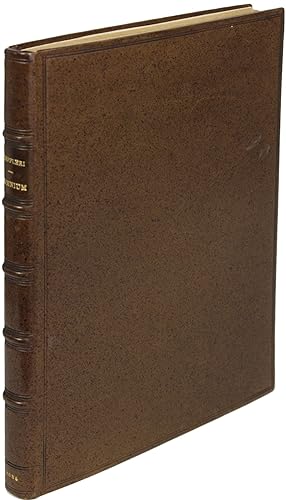

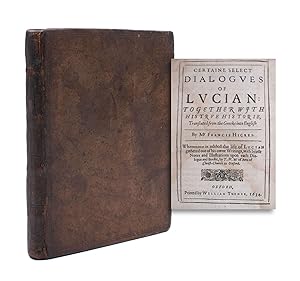


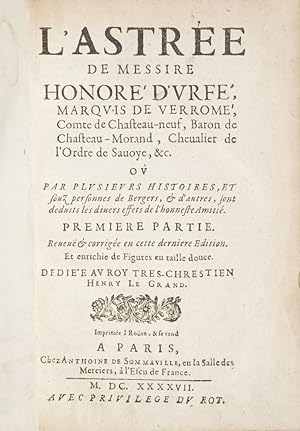
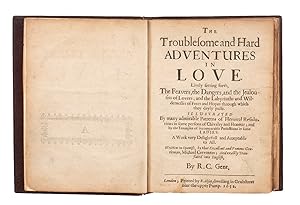
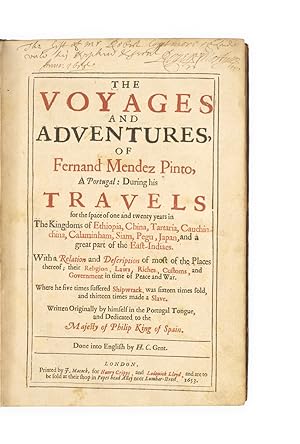
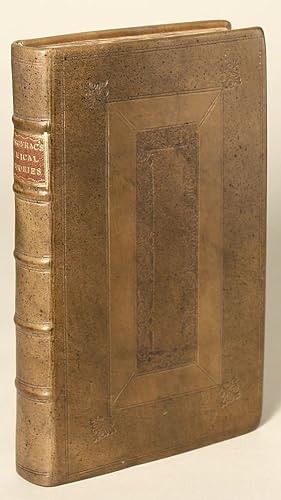
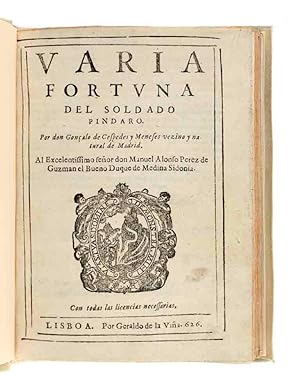
![Image du vendeur pour Mundus Alter et Idem. Authore Mercurio Britannico. [Bound with] CAMPANELAE, Thomas. Civitas Solis [with] BACON, Francis Bacon. Nova Atlantis. mis en vente par Shapero Rare Books](https://pictures.abebooks.com/inventory/md/md30829642438.jpg)
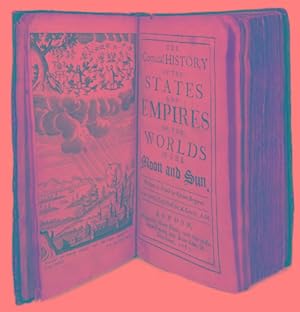
![Image du vendeur pour [Reynard the Fox] The Most Delectable History of Reynard the Fox. Newly corrected and purged, from all grossness in phrase and matter. Augmented and enlarged with sundry excellent morals and expositions upon every several chapter. To which may now be added a second part of the said history: as also the shifts of Reynard the son of Reynard the Fox, together with his life and death, &c. [With:] The Most Pleasant and Delightful History of Reynard the Fox. The Second Part. [With:] The Shifts of Reynardine the Son of Reynard the Fox or a Pleasant History of His Life and Death. Full of Variety, &c mis en vente par James Cummins Bookseller, ABAA](https://pictures.abebooks.com/inventory/md/md31662894808.jpg)
